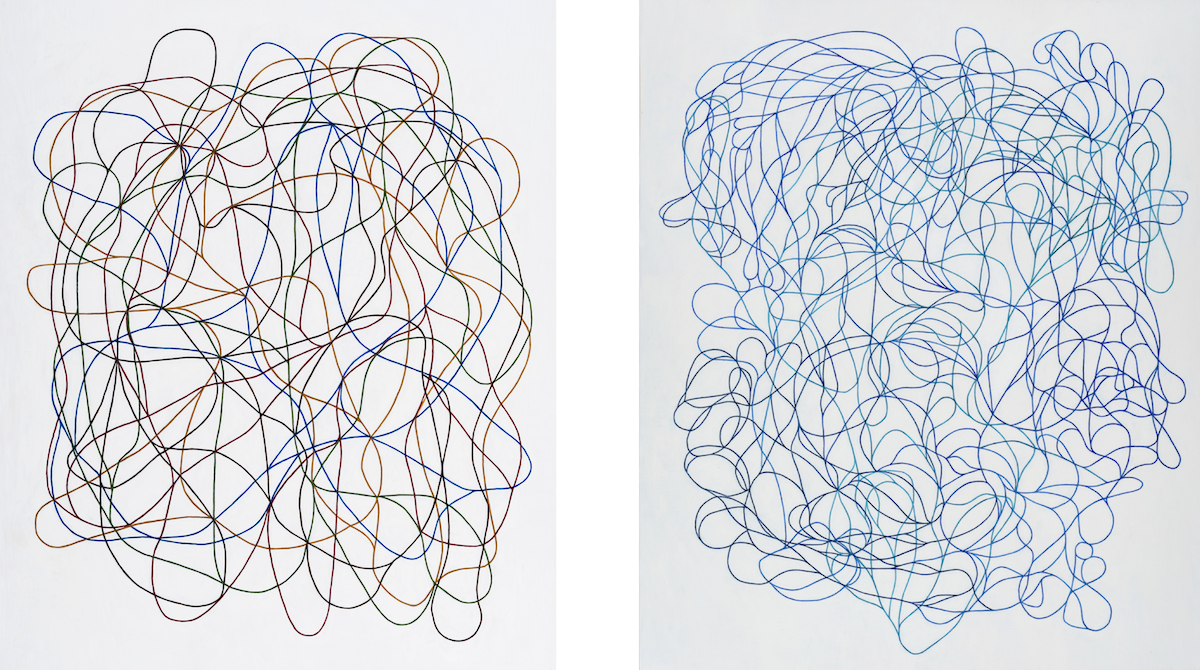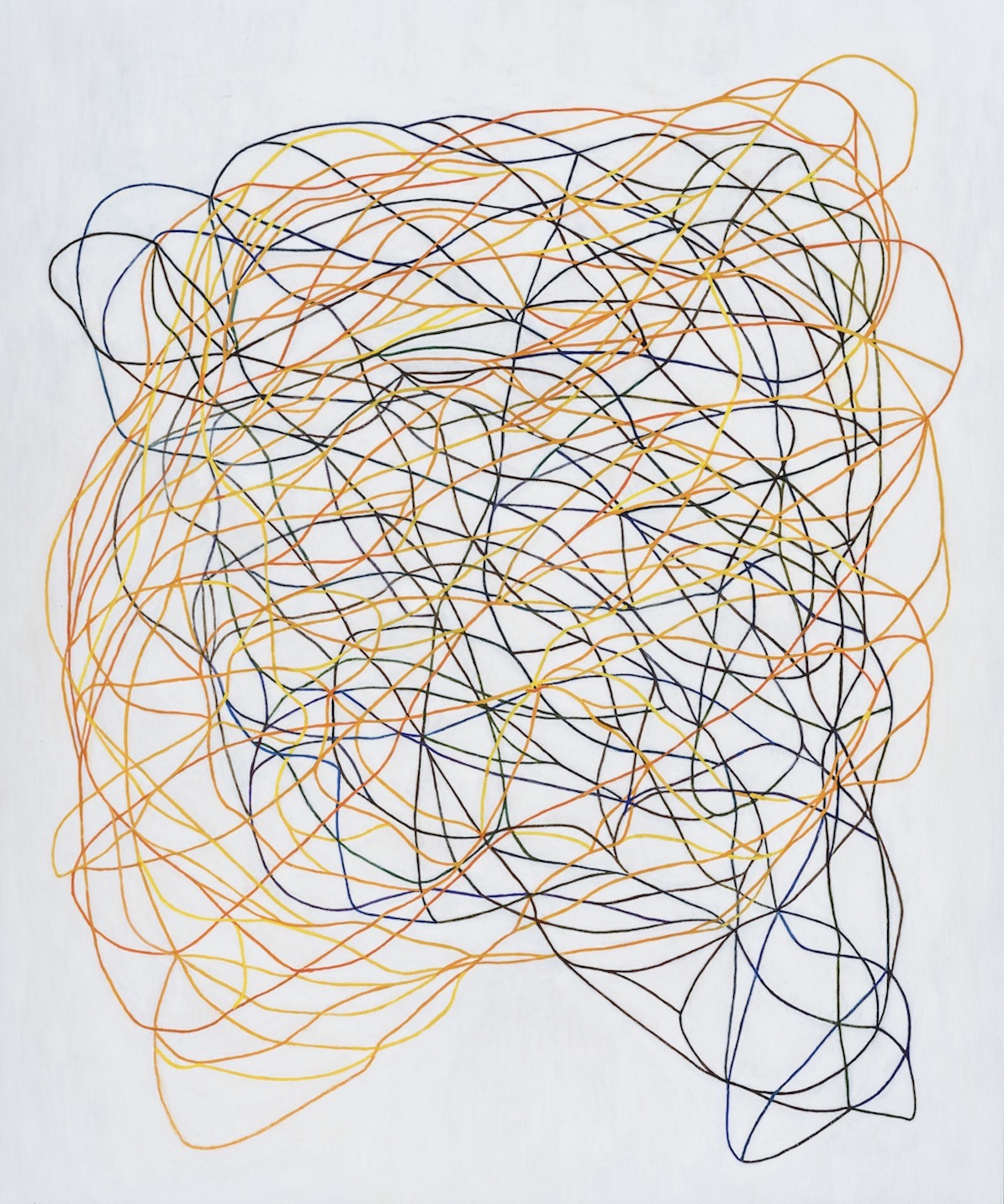“I want to know if you can disappoint another to be true to yourself. If you can bear the accusation of betrayal and not betray your own soul. If you can be faithless and therefore trustworthy.”
― Oriah Mountain Dreamer, The Invitation
My therapist introduced the above passage to me exactly when I needed to hear it. At that time (now several years ago), I wanted so badly to evade the accusation of betrayal – of faithlessness. I had not considered the prospect proffered by Oriah Mountain Dreamer: that it’s possible to be both faithless and trustworthy – that I might inhabit a story of betrayal with two sides to it. The notion gave me a way forward at an otherwise paralyzing moment in my life.
A year or so later, I made Therefore Trustworthy (shown above), one of several new works I’ve just added to my website.
More often than not, my abstract work is grounded in narrative. With its two masses of linear form (one warm and orange, the other dark and cool) bent in opposite directions and overlapping to create the complete picture, Therefore Trustworthy connotes the notion of co-existing with contradictory forces. That was my story – that is my story, and making a painting about it helped me own it.
On my website’s main gallery page, I have an entire section of relatively new works (made 2019 and 2020) similarly transmuting my personal experience into abstract image. Here are two more examples:

I write about We Are Five (left) in the online exhibition Grace. Big Crying (right) has a less complex narrative: simply put, living on the other side of transformational grief, crying has been beneficial to me time and again – so with joy I paint tears, like an endlessly gurgling spring.
I have been told I make “squiggle” or “scribble” drawings – monikers dismissive-sounding enough to have at one time made me flinch. But the descriptions are actually not far from the truth, functionally: such quick drawings are used in art therapy to allow patients to get to the emotional hearts of their stories – and isn’t that what I am doing? So though I’m not a patient, and though these three works took hundreds of hours to complete (they are meticulously painted 24″ x 20” oil paintings), they accomplish much of what a clinical session would.
And for that, I am grateful.
—Peter
IMAGE CREDITS: Alice Neel, Self‐Portrait, 1980, oil on canvas, 53 1/4 × 39 3/4 inches (Metropolitan Museum of Art; © The Estate of Alice Neel); Rembrandt van Rijn, Self-Portrait, 1659, oil on canvas, 84.5 x 66 cm (National Gallery of Art); Palmer Hayden, Blue Nile, 1964, watercolor, gouache, and pencil on paper, 54.6 x 70.8 cm (Museum of Modern Art, Committee on Drawings and Prints Fund).

